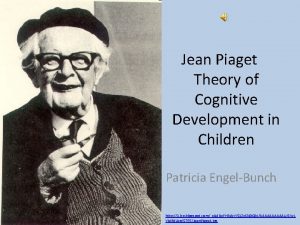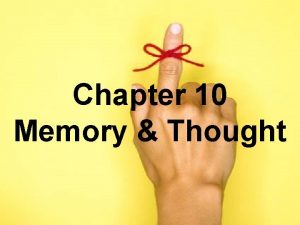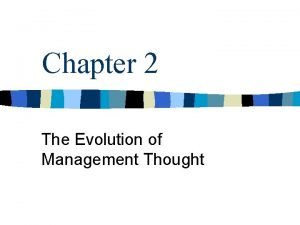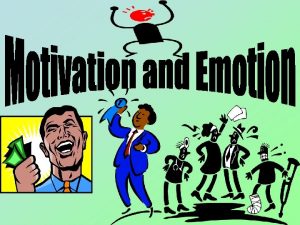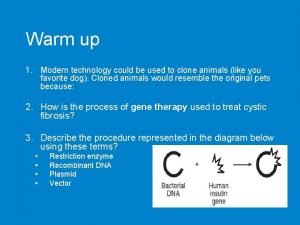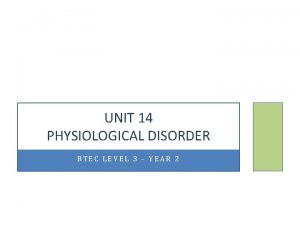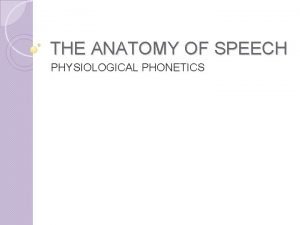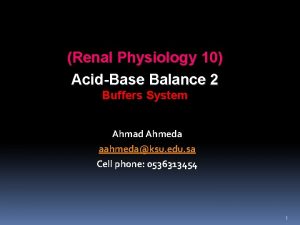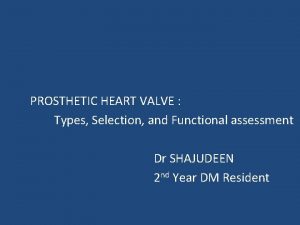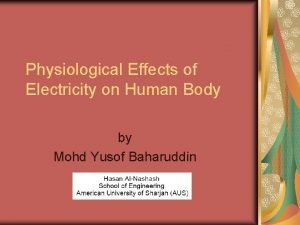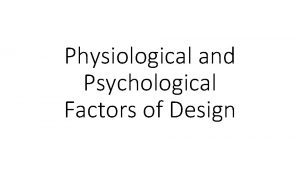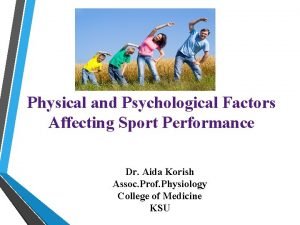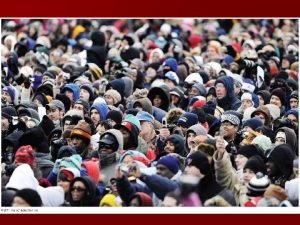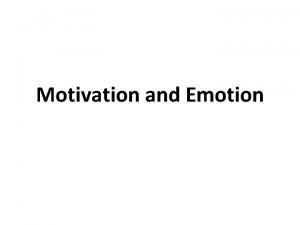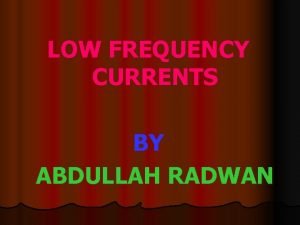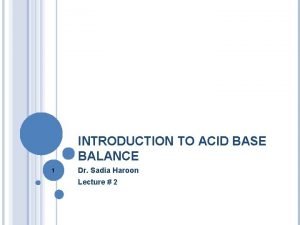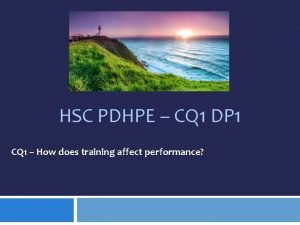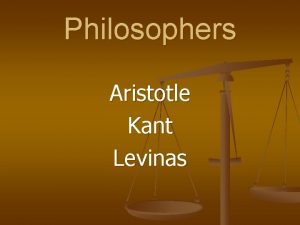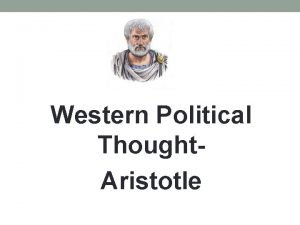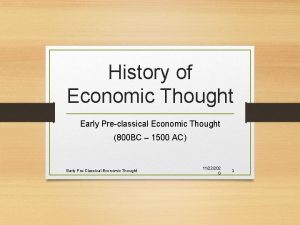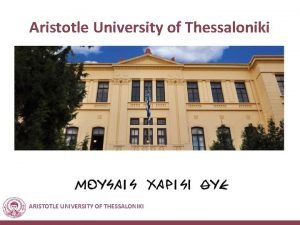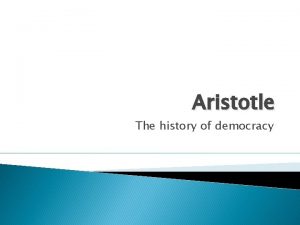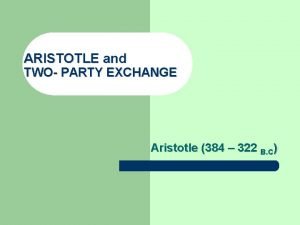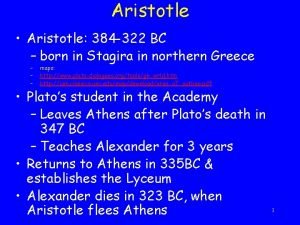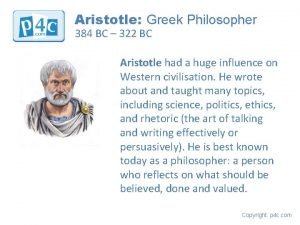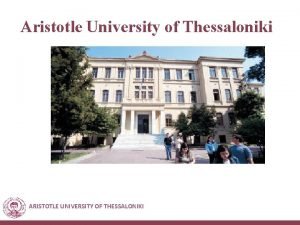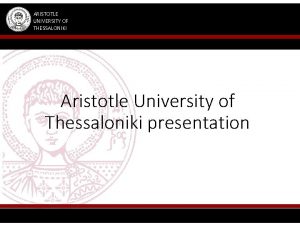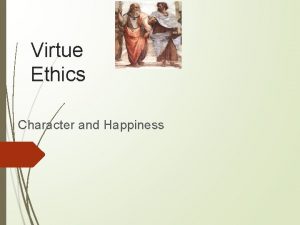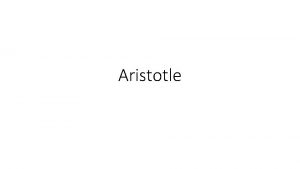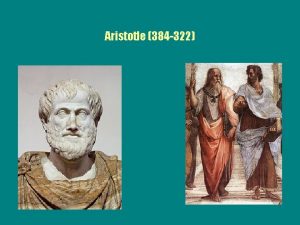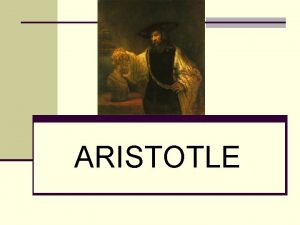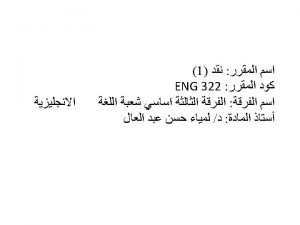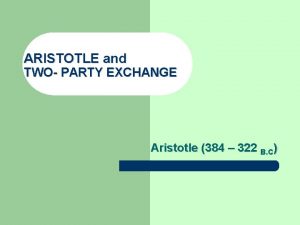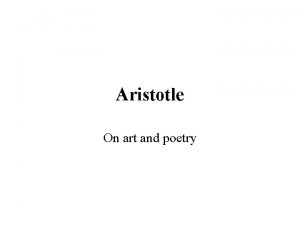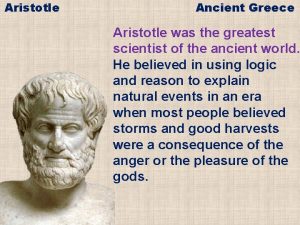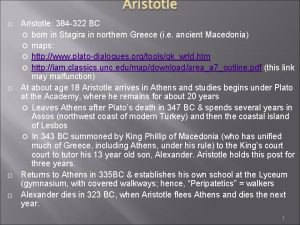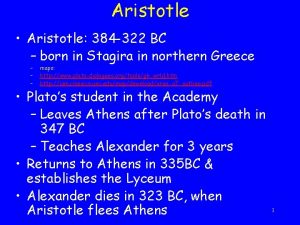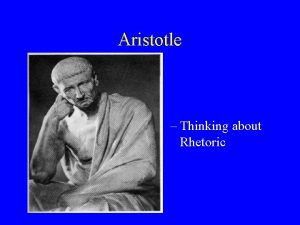Chapter 7 Physiological Influences Early Influences Aristotle Thought




























- Slides: 28

Chapter 7: Physiological Influences

Early Influences Aristotle – Thought the brain acted as a radiator and cooled the blood. – Mind was in the heart Galen – Brain contained mind. Ventricles contained animal spirits – Three chambers in the ventricles • First conducts sensory analysis • Second is seat of reason and thought • Third is memory (note process flow)

Early Influences Descartes – A hydraulic system of hollow tubes led to muscles. – A tiny thread in each hollow tube opened pores in the brain in response to sensory stimuli – Opening of the pores released animal spirits, causing muscles to move By the end of the 1700’s, hydraulic system completely discarded in favor of electricity

Early Influences Electricity… Galvani: a frog muscle could contract after removed from frog—by electricity Speculated that frogs generate electricity… GSR (Galvanic Skin Response)…

Helmholtz (1821 -1894) Berlin medical school… Army service Presented paper to Physical Society on conservation of energy (age 26) After army, academics… Invented ophthalmoscope Wrote three volume work on physiological optics

Helmholtz (1821 -1894) Published research on acoustics, afterimages, color blindness, the Arabian-Persian musical scale, human eye movements, the formation of glaciers, geometrical axioms, and hay fever

Helmholtz (1821 -1894) Contributions to psychology • Speed of neural impulses – Measured delay between nerve stimulation and muscle contraction from various distances – Impulses about 90 feet/second (previously thought to be instantaneous) • Theorized that thought is followed by movement at a measurable interval, but did not research it.

Helmholtz (1821 -1894) Contributions—Vision research • Young-Helmholtz theory (a. k. a. trichromatic theory) – perception of color comes form pattern of stimulation of three different types of receptor neurons in the retina. – Theory was incomplete, but first widely accepted theory

Helmholtz (1821 -1894) Contributions—Audition • Place theory of pitch perception – How we discriminate between pitches – 1961, Von Bekesey won Nobel prize for proving place theory Helmholtz was more interested in physiology than in psychology, but had huge impact in perception…

Hering (1834 -1918) Medical education… Physiologist Developed the opponent process theory of colorblindness. Hering’s color blindness testing apparatus

Hering Opponent process theory. . . Opposing pairs of color receptors differentially respond to red-green and yellow-blue. This led to a debate over whose theory was correct. (Helmholtz correct at receptor level, while Hering correct at retinal ganglions)

Hering Debate over whose theory was correct… At one level it was a theory about which was correct… But at another level it was about empiricism (Helmholtz) versus nativism (Hering)… Figure 7. 1 shows how both were right…

Johannes Muller (1801 -1858) Best known for the doctrine of specific nerve energies. No matter how a specific sensory nerve is stimulated, it will always yield the same sensation. Each sensory receptor responds to only one type of physical energy.

Franz Joseph Gall (1758 -1828) German physician, anatomist Examining normal and abnormal brains, thought higher mental functions were associated with larger brains, especially cerebral cortex. Best known for the pseudoscience of phrenology.

Gall Phrenology… Assumed the skull deforms to shape of brain beneath. Could tell about developmental state of brain by bumps and depressions in skull. Assumed, correctly, that different areas had different functions.

Gall Phrenology… Studied heads of lots of people with “special qualities” (prisons, asylums, childrens’ homes…) Chart on p. 158 lists lots of the “areas” he found (and picture in previous slide).

Pierre Flourens (1794 -1867) Graduated medical school at age 19. Described anesthetic properties of chloroform in 1847, also anesthetic properties of ethyl chloride

Flourens Opponent of phrenology and localization, performed lots of brain surgeries on animals to prove functions not localized as Gall suggested. Used ablation technique…(also used by many others later) Problem with method—sliced large areas, damaging more than just the cortex (Later, Phineas Gage performed a self ablation… p. 160 -161…refuting Flourens)

Paul Broca (1826 -1880) More evidence for localization… Chief of surgery at a Paris hospital… Had aphasic patient with left frontal lobe damage (p. 163).

Paul Broca (1826 -1880) Examined brain after pt. died… Damage to area now called Broca’s area, devoted to speech production. Damage produces halted, broken speech (Broca’s aphasia) Broca also believed brain size mattered…

Ernst Weber (1795 -1878) Ph. D 1815, studied anatomy and physiology Explored areas of touch, muscle sensation, kinesthetics Developed two point threshold… • Sensitivity varies greatly depending on different body parts. Also, Just noticeable difference concept.

Enest Weber Ph. D 1815, studied anatomy and physiology Explored areas of touch, muscle sensation, kinesthetics Developed two point threshold… • Sensitivity varies greatly depending on different body parts.

Ernst Weber Also, Just Noticeable Difference concept —the smallest difference between stimuli that can be detected. Ss lift two weights, a standard weight and a comparison weight. Report, if they feel a difference, which is heavier. Small differences not detected; larger differences detected. Similar results with light stimuli.

Gustav Fechner (1801 -1887) Studied medicine at Leipzig, attending Weber’s lectures; never left. Diverse intellectual interests: physiology, physics, psychophysics, philosophy 1830’s—research in sensation. Seriously injured eyes looking at the sun while conducting afterimage research. Bizarre lifestyle after injury… Bizarre cure for his illness…

Gustav Fechner (1801 -1887) Sought to understand the connection between the physical world and the spiritual. Also sought to demonstrate a quantitative relationship between material stimuli and mental activity. Believed mind and body were one: “mind and matter are simply different ways of conceiving of one and the same reality ”

Gustav Fechner (1801 -1887) Developed the pleasure principle, later adopted by Freud. Pretty much founded experimental psychology and psychophysics. Absolute threshold—stimulus intensity below which there is no perception Difference threshold—the point at which the lest amount of change produces perception

Gustav Fechner (1801 -1887) Weber’s law— quoted on p. 171 Fechner’s law— p. 172

Summary Scientists of this period began the intensive study of the nervous system. Birth of psychophysics and experimental psychology. Three major tools developed in this era— ablation, electrical stimulation, and anatomical staining—continued to be used in research into the 20 th century.
 Physiological influences on food choices include
Physiological influences on food choices include Complete vs incomplete thinking
Complete vs incomplete thinking Concrete operational stage
Concrete operational stage Early cpr and early defibrillation can: *
Early cpr and early defibrillation can: * Chapter 10 memory and thought answers
Chapter 10 memory and thought answers Evolution of management thought
Evolution of management thought Physiological adaptations
Physiological adaptations What is emotion
What is emotion Why is artificial selection used
Why is artificial selection used Unit 14 health and social care diabetes
Unit 14 health and social care diabetes Unit 14 health and social care level 3
Unit 14 health and social care level 3 James-lange theory
James-lange theory Larynx funtion
Larynx funtion Physiological buffer system
Physiological buffer system Physiological process in reading chart
Physiological process in reading chart Pannus
Pannus Physiological density
Physiological density Physiological perspective
Physiological perspective Chassis leakage current
Chassis leakage current Physiological design
Physiological design Physiological factors affecting performance
Physiological factors affecting performance Ester boserup
Ester boserup Stimulus motives definition
Stimulus motives definition Smart bristow faradic coil working
Smart bristow faradic coil working Unit 14 physiological disorders assignment 1
Unit 14 physiological disorders assignment 1 Ap human geography
Ap human geography Phosphate buffer system equation
Phosphate buffer system equation Oxygen uptake pdhpe
Oxygen uptake pdhpe Structural adaptation
Structural adaptation


